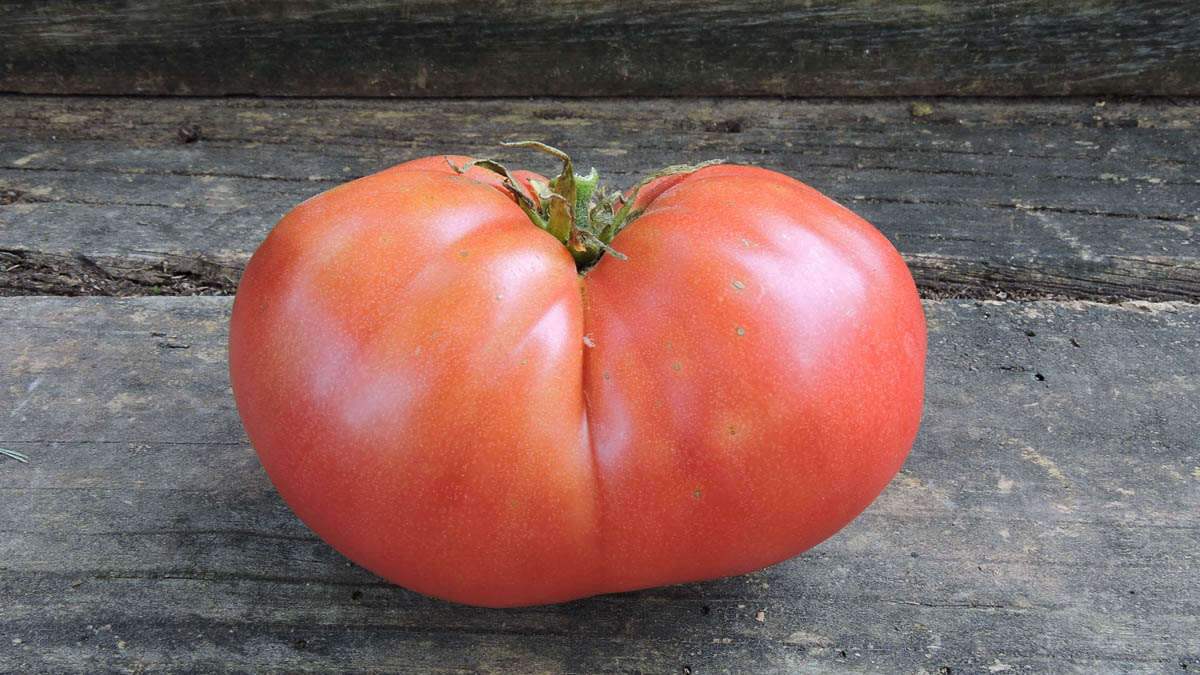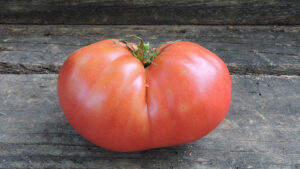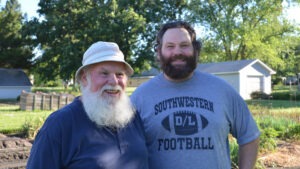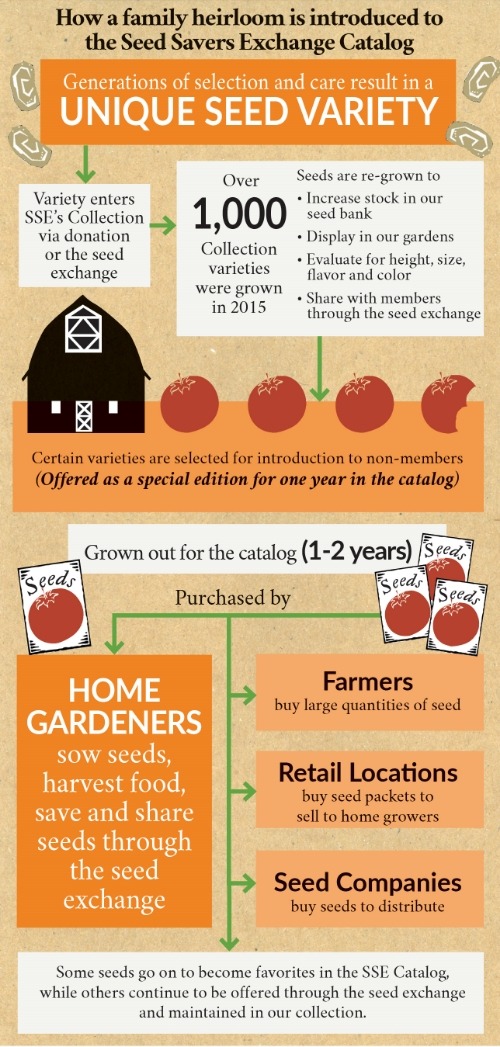When you make a purchase from Seed Savers Exchange, you help fulfill our nonprofit mission to protect our food and garden heritage. Do even more good by making a donation to help us preserve and share even more heirloom varieties!
Missouri Pink Love Apple Tomato

The Heritage Farm Collection: ‘Missouri Pink Love Apple’ tomato
- Pink beefsteak tomatoes grow with 1-3 fruit per cluster
- Slightly sweet flavor with a juicy, meaty texture
- Indeterminate plants have fruit that ripens all season

Member Ron Thuma of Hartford, Kansas, introduced this variety into the Exchange. He received it in 1992 from George and Bessie Jennings of Waverly, Kansas. The Jennings were an elderly couple who had heard about Ron’s interest in seed saving, so they contacted him to see if Ron wanted this tomato variety. The Jennings claimed that their ancestor “Grandpa Barnes” grew it during the 1860s but only as an ornamental plant because he thought tomatoes were poisonous (not an uncommon misconception then).

In October 2015, SSE staff members visited Ron Thuma at his home while we were attending the Mother Earth News Fair in Kansas. Ron has a large, meticulously clean garden that takes up most of his yard, and he has a long list of civic service accomplishments over his career, including being Mayor of Hartford. Letters addressed to “Mr. Organic Gardener, Hartford, KS” will reach Ron.
Put it on the dinner table!
This slicing tomato is delicious fresh. Sprinkle with sugar or salt, add it to a sandwich, or chop into a fresh pico de gallo.
Grow it!
You should start plants indoors 4-6 weeks before the last frost date for transplanting them into the garden. Plant them outdoors 2-4 weeks after your last expected frost.
Plant your seeds 1/4-1/2 in. deep in soil trays or pots. Transfer them to 3-4 in. pots when their true leaves appear. When transplanting, bury seedlings up the stems up to their leaves.
Make sure that your soil is well fertilized, as this crop is a heavy feeder and takes a lot of nutrients from the soil. Consider adding compost to the soil the year before you plant.
These plants prefer warm weather and soil, so they should be grown when temperatures are over 68 degrees F. You should avoid watering them from above as damp leaves may be susceptible to disease.
The CORE Project
This project represents the efforts of our Preservation program to document our Collection through the Evaluation and the Collection Origins Research Effort (CORE).
The CORE project began in 2011. It is an effort to record the Collection’s cultural history by gathering, documenting, and sharing stewardship history. Our comprehensive Evaluation program began in 2010. Evaluation staff document Collection growouts, including morphological traits, photographs, taste evaluation, and purity assessment. These programs converge to give us a rich portrait of individual varieties in our Collection.
When we identify varieties with compelling stories and outstanding performance traits, they are ‘short listed’ for consideration in the ‘Heritage Farm Collection.’ Most ‘Heritage Farm Collection’ introductions are family heirlooms or historic commercial varieties that faded from commerce.

Originally published October 22, 2015. Edited February 5, 2025.